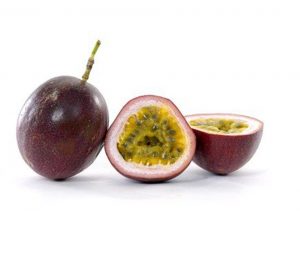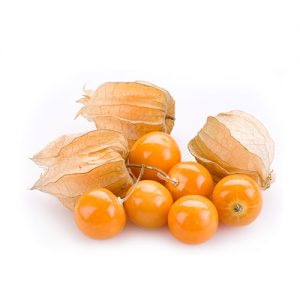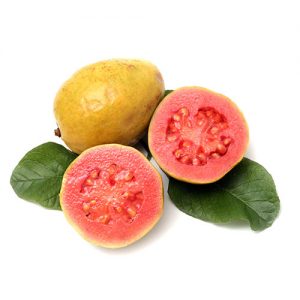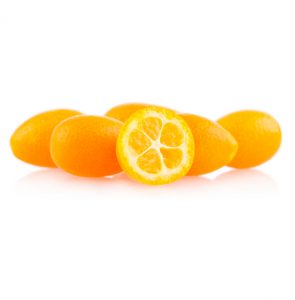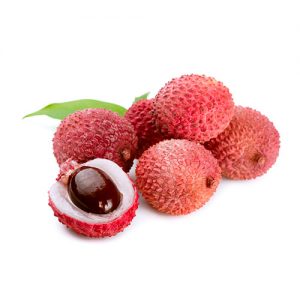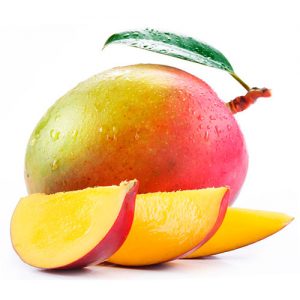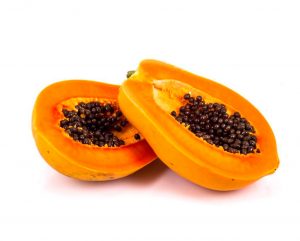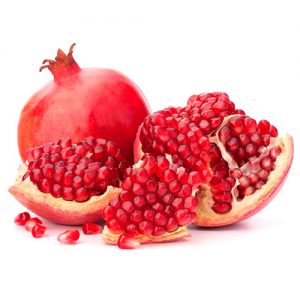About the carambola
Carambolas, also known as starfruit, originally came from Indonesia and Malaysia. They measure 3-5 inches (7-12 cm) and can be found in different varieties. Bigger types are golden-coloured, sweet and a bit acidic, while smaller ones are very sour and green or yellow-coloured. The flesh is translucent and very juicy and the texture varies from soft to firm and can be crispy.
The carambola tree is an evergreen tree that can grow to more than 30 ft (10 m), with a dense and rounded top. The leaves are copper-coloured, but older ones can present an intense green colour with pink/purple flowers. It is a decorative, quite colourful plant. The fruit can be cut in slices to garnish meat dishes, desserts, pies and also cocktails and sparkling beverages.
How to preserve and consume carambolas
Carambolas can be preserved up to 6 weeks at temperatures between 5-7ºC and a relative humidity of 90-95%. The most common method for preserving this fruit is refrigeration.
When the carambola is golden-coloured and dark at edges, it means the optimum point of ripening has been reached. The protruding edges start darkening a few days after buying the fruit. But this is a “bad” sign only to the eye, not to the mouth! And the solution is really easy: you only need to cut them off with a sharpen knife!
This fruit is best preserved in a fresh location far from direct sunlight. If the carambola is green at the time of purchase, it is advisable to leave it at room temperature (20ºC). When the optimum point of ripening is reached, we recommend storing it in the fridge at a minimum temperature of 5ºC. With these conditions it can last at least 3 weeks.
Carambolas can be prepared fast and easy. You only have to wash the fruit well and cut it in slices without any particular precision. It has a slightly acidic kick, which is really refreshing and much appreciated.
Nutritional properties of the carambola
| CARAMBOLA NUTRITION FACTS – 100 G | |
|---|---|
| CALORIES | 31 |
| TOTAL FAT | 0.33 g – 1% |
| SATURATED FAT | 0.019 g – 0% |
| POLYUNSATURATED FAT | 0.184 g |
| MONOUNSATURATED DAT | 0.03 g |
| CHOLESTEROL | 0 mg – 0% |
| SODIUM | 2 mg – 0% |
| POTASSIUM | 133 mg |
| TOTAL CARBOHYDRATE | 6.73 g – 2% |
| DIETARY FIBER | 2.8 g – 11% |
| SUGARS | 3.98 g |
| PROTEIN | 1.04 g |
| VITAMIN A | 1% |
| VITAMINA C | 57% |
| CALCIUM | 0% |
| IRON | 0% |
Percent Daily Values are based on a 2000 calorie diet. Your daily values may be higher or lower depending on your calorie needs.
Health benefits of the carambola
- Due to its high anti-oxidant content, it is highly recommended for consumption by young people, athletic people, adults, pregnant women or elderly people.
- Carambolas also have provitamin A and vitamin C, so they are an alternative option for citrus-intolerant people to obtain these vitamins.
- They also have fibre content; therefore they can be used as a mild laxative by people with a tendency towards constipation.
- They also stimulate saliva secretion and helps clean your mouth thanks to the malic acid content.
- Carambolas are also known for their high content in oxalate. This provides medicinal properties like hemostatic, which helps stop bleedings and relieve bleeding hemorrhoids.
- Due to its high content in vitamin A, this fruit is very good for the skin health, hair, mucosa, eyesight and bones, as well as for the proper functioning of immune system.
- It is recommended for people with diabetes, high blood pressure or certain heart conditions, as it is low in carbohydrates and sodium, but very rich in potassium.
- It is the perfect fruit to loose weight because of its high content in water and potassium, together with very low levels of calories, fat and carbohydrates.
Consumption is not fit for patients with kidney failure or calcic renal lithiasis, given its high level of calcium oxalate.
Carambola varieties
These plants produce two varieties only: carambola and bilimbi. Both fruits are similar in shape; they hang on the tree in trusses; they have a beautiful appearance, and their feather-shaped leaves are light green-coloured. Flowers grow in bunches.
Bilimbis look like gherkins. It is a fruit of approximately 3.5 inches (9 cm) that can be consumed fresh when ripe. However, please note they have a sour taste, and that is why they are mostly used in culinary preparations like jams, jellies or refreshing drinks.
Curious facts about carambolas
- Carambola’s scientific name, Averrhoa, comes from the Arabic physician and philosopher Averroes.
- Each carambola tree produces around 300 pieces of fruit.
- The acids from this fruit can be used to clean and polish metals like copper, while carambola juice can remove rust stains from white clothing.




